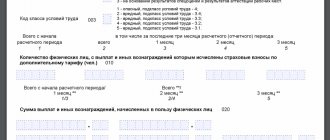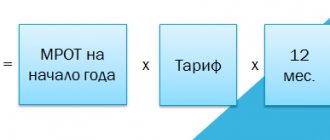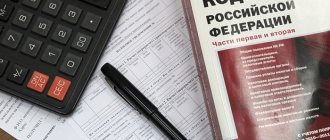Where are contributions accrued to extra-budgetary funds paid in 2021?
Since 2021, control over the calculation and payment of insurance premiums intended for the Pension Fund of the Russian Federation, the Compulsory Medical Insurance Fund, the Social Insurance Fund (except for contributions for injuries) has been transferred to the tax authorities. The calculation rules and description of the procedure for paying contributions to those who replaced the administrator were included as an integral part in the text of the Tax Code of the Russian Federation. These changes have led to the fact that insurance premiums have become subject to most of those provisions of tax legislation that are common to all tax payments. It is precisely because of this that the term “taxes to extra-budgetary funds” has become fair in relation to insurance premiums.
Where are taxes paid to extra-budgetary funds in 2021? There are no changes in this compared to 2021:
- contributions controlled by the tax service are paid to the budget, registering this payment in the same way as payment of any other tax, with the corresponding “budgetary” BCC;
- contributions for injuries remaining under the jurisdiction of the Social Insurance Fund are transferred to this fund itself.
Accordingly, reporting on contributions is submitted to 2 different places and 2 different authorities control the correctness of accrual and timely payment.
Penalties for non-payment of insurance premiums
For non-payment of insurance payments, legislative acts provide for the following sanctions:
- Penalties for each day of non-payment in the amount of 1/300 of the refinancing rate (from October 1, 2021, it is planned to increase the penalty for non-payment for organizations to 1/150 of the refinancing rate if the delay exceeds 30 days).
- The fine for non-payment is 20% of the debt amount if the violation of the law was not planned (in other words, you might have forgotten to transfer money to the Federal Tax Service).
- A fine of 40% of the outstanding premiums if the non-payment is intentional (for example, you deliberately do not pay payments or lower the insurance rate).
It is worth noting that the above measures are taken in relation to the following offenses related to non-payment of contributions:
- Lack of payment;
- Failure to meet the payment deadline;
- Partial payments;
- Incorrect payment calculation (for example, you made a mistake in some number);
- Understating the basis for calculating contributions.
Types of contribution payers and differences in their assessments
Payers of contributions are divided into 2 groups (Article 419 of the Tax Code of the Russian Federation):
- employers, which include legal entities, individual entrepreneurs and individuals providing work to hired employees;
- self-employed persons (individual entrepreneurs, notaries, lawyers, appraisers and others like them) who must pay contributions for themselves, regardless of whether they have employees (i.e., having employees does not exempt them from paying contributions for themselves, but paying contributions for itself does not serve as an exemption from payments for hired employees).
The rules for calculating and paying contributions for these 2 groups differ significantly. There are differences in almost all key points:
- the number of extra-budgetary funds to which contributions are paid;
- rules for calculating the base for calculating payments;
- opportunities to apply benefits and use insurance funds;
- reporting obligations;
- the procedure for accrual and timing of payments.
Employers pay all 4 types of contributions (pension, medical and social insurance (sick leave and maternity), injury) intended for all 3 extra-budgetary funds (PFR, MHIF, Social Insurance Fund). The basis for their calculation is income paid to employees. Part of this income is preferential, and social payments can be made through contributions to the Social Insurance Fund. Employers generate quarterly reports on accrued/paid/used contributions.
Self-employed persons are required to pay contributions only to the Pension Fund and the Compulsory Medical Insurance Fund (clause 6 of Article 430 of the Tax Code of the Russian Federation). The volume of their payments to each of the funds depends on the federal minimum wage established at the beginning of the year and is fixed in nature, but for accruals to the Pension Fund it can acquire a variable part. The benefits here are expressed in the fact that contributions to the Pension Fund of the Russian Federation are always accrued by the heads (members) of peasant farms (peasant farms) only in a fixed amount. Reporting on contributions is not provided and, as an exception, is submitted only by heads of peasant farms that ceased operations before the end of the accounting year.
However, 2 such different types of payers also have common points regarding contributions:
- accruals are made by them independently;
- the billing period, defined as a year, is the same;
- payment to each fund is calculated and paid separately;
- When calculating contributions, the same basic tariffs are applied;
- the established deadlines are subject to the rule of transfer to a later date if they fall on a weekend (clause 7 of article 6.1 of the Tax Code of the Russian Federation, clause 4 of article 22 of the law “On compulsory social insurance...” dated July 24, 1998 No. 125-FZ);
- The same rules for processing payment documents are used.
For more information on filling out payment slips for insurance premiums, read the article “How to fill out payment slips for insurance premiums in 2017?”
Insurance premium rates 2021 for individual entrepreneurs
Since 2021, the amount of individual entrepreneur contributions is not tied to the minimum wage. The Tax Code of the Russian Federation now specifies the amount of fixed payments in rubles
For entrepreneurs whose income does not exceed 300 thousand rubles, the amount of contributions for compulsory pension insurance and compulsory health insurance is paid in a fixed amount.
However, individual entrepreneurs whose annual income is more than 300 thousand rubles must pay additional pension contributions at a rate of 1%. That is, if the income of an individual entrepreneur for a year exceeds 300 thousand rubles, then in addition to fixed contributions, the entrepreneur must transfer to the Federal Tax Service an additional amount in the amount of 1% of the amount exceeding the limit (clause 1 of Article 430 of the Tax Code of the Russian Federation).
The procedure for calculating and paying contributions from the salaries of employees
Contributions from the income of employees are calculated by employers monthly when calculating salaries for the next month and are also paid monthly (but in the month following the billing month). The last day of payment for all types of contributions is the same - the 15th day (clause 3 of Article 431 of the Tax Code of the Russian Federation, clause 4 of Article 22 of Law No. 125-FZ of July 24, 1998).
The accrual base is formed on an accrual basis from the beginning of the year, and the amount that is actually accrued for the last month of the period is actually subject to monthly payment. The base is reduced due to payments that are not subject to taxation (Article 422 of the Tax Code of the Russian Federation, Article 20.2 of Law No. 125-FZ of July 24, 1998).
In 2021, for contributions accrued to the Pension Fund, employers continue to use basic tariffs that are lower than the basic ones (Article 426 of the Tax Code of the Russian Federation). At the same time, some payers have the right to apply even lower rates on payments both to the Pension Fund and to other funds (Articles 427–429 of the Tax Code of the Russian Federation). The values of a number of these rates are increasing from 2021, and some of them reach generally established values.
For the bases calculated for the Pension Fund of Russia and the Social Insurance Fund, there is a concept of their limit values, upon reaching which contributions to the Social Insurance Fund for sick leave and maternity leave cease to be accrued, and contributions to the Pension Fund of the Russian Federation begin to be calculated at a different rate. The value of these limits increases every year, and 2021 in this sense was no exception.
To learn about the amounts to which the income limits for employees are expected to increase in 2021, read the material “The government has decided on the size of the maximum contribution bases for 2018.”
When do you need to report contributions (deadlines)
| Fund | Reporting on paper | Electronic reporting |
| Pension Fund | no later than the 15th day of the second calendar month following the reporting period | no later than the 20th day of the second calendar month following the reporting month. |
| FFOMS | ||
| FSS | no later than the 20th day of the calendar month following the reporting period | no later than the 25th |
How do self-employed persons calculate and pay contributions?
For self-employed persons, a different procedure for paying insurance premiums applies. They need to pay for the billing period, but how this will be done (in parts or one-time) does not matter. It is important to meet payment deadlines. And they will differ depending on what the payment turned out to be (fixed or containing a variable part).
A payment is considered to be fixed when the basis for its calculation is determined only by the federal minimum wage established at the beginning of the accounting year and the number of months of activity in a year (including the number of days falling on an incomplete month). This calculation algorithm is used for payments (clauses 1, 2 of Article 430 of the Tax Code of the Russian Federation):
- in the Compulsory Medical Insurance Fund;
- Pension Fund, if they are accrued when the annual income of a self-employed person does not exceed 300,000 rubles, or is carried out by the heads (members) of peasant farms.
If the annual income of a payer who is obliged to pay contributions for himself turns out to be more than 300,000 rubles, then a variable is added to the fixed part of the payments accrued to the Pension Fund. This variable part is calculated as 1% of the amount of income exceeding RUB 300,000. However, the amount of contributions calculated in this way cannot exceed 8 times the value of the fixed part calculated for the full year.
Compared to the previous year, a larger federal minimum wage (RUB 7,800) is used to calculate fixed payments in 2021. The rates remain the same and are the highest possible from the base rates.
For information about the size of the federal minimum wage at the beginning of 2018, read the article “The size of the minimum wage in 2021.”
Reduced insurance premium rates
| Policyholders | Pension Fund | FSS | Compulsory Medical Insurance Fund |
| Companies, firms, individual entrepreneurs on the simplified tax system. A prerequisite is a maximum income of 79 million rubles. | 20,0 | 0 | 0 |
| Pharmacy establishments, individual entrepreneurs that have received a license to sell dosage forms on UTII. Reduced rates - only for workers engaged in pharmacy activities | 20,0 | 0 | 0 |
| IP for PSO | 20,0 | 0 | 0 |
| IT companies and firms | 8,0 | 2,0 | 4,0 |
| Participants of the Skolkovo project | 14,0 | 0 | 0 |
| Enterprises involved in free economics. zone in Crimea | 6,0 | 1,5 | 0,1 |
Deadlines for paying taxes to funds in 2021 for yourself
For payment of fixed payments there is only 1 legally established period. It corresponds to December 31 of the accounting year (clause 2 of Article 432 of the Tax Code of the Russian Federation), i.e. the fixed payment (as well as the fixed part of the payment to the Pension Fund, which also contains a variable component) must be paid in the year of its accrual. However, the number and volume of payments that can be made against this payment during the year are not limited in any way.
For the variable component of the calculation of contributions for the Pension Fund, a different deadline applies, the last date of which is set as April 1 of the year occurring after the end of the calculation year.
These deadlines will not be observed only if the payer ceased activity in the accounting year. In such a situation, he will have to pay contributions within 15 calendar days from the date (clauses 4, 5 of Article 432 of the Tax Code of the Russian Federation):
- deregistration of a self-employed person who is not the head of a peasant farm;
- submission by the head of the peasant farm of a report on contributions to the Federal Tax Service, for the submission of which he is also given no more than 15 calendar days.
Taking into account the transfers allowed by law, the deadlines for payment of contributions by self-employed persons in 2021 will be as follows:
The variable part of the payment to the Pension Fund, accrued for 2021, will need to be paid already in 2021 - no later than 04/01/2019.
Insurance premium rates for individual entrepreneurs
| Type of contribution Rate Amount | Type of contribution Rate Amount | Type of contribution Rate Amount |
| Fixed contributions to pension insurance if the amount of income for the year does not exceed 300 thousand rubles | – | RUB 26,545 |
| Additional contributions to pension insurance if the amount of income for the year is more than 300 thousand rubles | 1% | 1% of the amount of the individual entrepreneur’s annual income, reduced by 300,000 rubles. |
| Fixed premiums for health insurance | – | RUB 5,840 |
Results
For contributions accrued to extra-budgetary funds, the same calculation and payment rules apply in 2021 as in 2021.
However, the magnitude of a number of components of the calculations changes. Moreover, these changes apply both to payments accrued by employers (the maximum value of the taxable bases is changing, the value of some rates, regarded as lower, is increasing), and to amounts calculated by self-employed persons (the minimum wage used in calculations has increased). You can find more complete information on the topic in ConsultantPlus. Free trial access to the system for 2 days.
Responsibility for non-payment of insurance premiums
There are the following types of liability for non-payment of contributions:
- Tax - occurs in case of minor errors made by an individual entrepreneur or an official of the company. In such a situation, a penalty is charged.
- Administrative – occurs when gross errors are made, which lead to a significant reduction in the base for calculating contributions, and, consequently, a decrease in the amount of the latter.
- Criminal - occurs in extreme cases when the amounts of debt are too large. Ordinary organizations with a small overdue payment are not afraid of this type of liability.
Criminal prosecution may have the following consequences:
- An individual (IP) can be fined up to 300,000 rubles and arrested for up to 36 months;
- An official of an organization may be imprisoned for up to 6 months, fined up to 500,000 rubles, or required to vacate his position for a period of up to 3 years.







